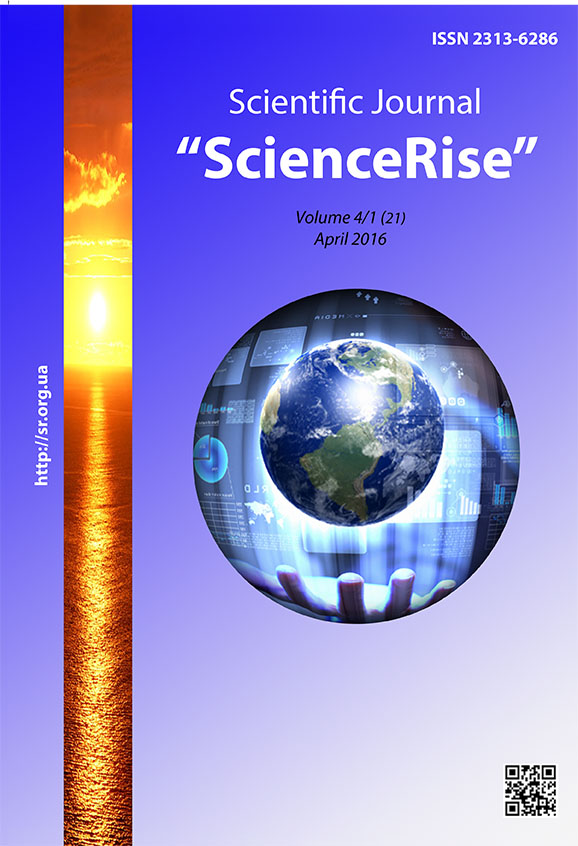Аналіз еколого-географічних особливостей центрів походження Triticum spelta і перспективи поширення культури в Україні
DOI :
https://doi.org/10.15587/2313-8416.2016.66199Mots-clés :
спельта, ГІС, моделювання, біокліматичні показники, центри походження, Triticum spelta, гліадиниRésumé
Вивчення особливостей еколого-географічних центрів походження Triticum spelta вказують на високу екологічну пластичність «дикороса альпійських прерій». Лімітуючими факторами, які визначають можливість рослини рости, розвиватися, розмножуватися та проявляти бажані господарські якості в Україні є максимальна температура самого теплого місяця та показники pH ґрунту
Références
Flyaksberher, K. A. (1935). Wheat. Vol. 1. Moscow; Leningrad: Gos. Publishing House kolhoznoy and sovhoznoy lit-ry, 262.
Zhukovski, P. М. (1971). Cultural plants and their relatives. Leningrad: Kolos, 448.
Kuckuck, H., Schiemann, E. (1957). Über das Vorkommen von Spelt und Emmer (Triticum spelta L. und T. dicoccum Schübl.) im Iran. Z. Pflanzenzüchtung, 38, 3833–3896.
Kihara, H., Yamashita, K., Tanaka, M. (1965). Morphological, physiological, genetical and cytogenetical studies in Aegilops and Triticum collected from Pakistan, Afghanistan and Iran. Results Kyoto Univ. Sci. Exp., 1, 1–118.
Mustafaev, I. D. (1964). Wheats of Azerbaijan and their value are in a selection and process of formation of forms. Bobrovsk: VNIIS.
Veremeychyk, A., Pashkevich, G. (2004). Peculiarity of ancient settlement in the tract Ovramenko circle. Archaeological research of L’viv University, 7, 270–281.
Romanova, Y. A., Gubareva, N. K., Konarev, А. В. (2001). Research of collection of type of wheat of Triticum spelta on polymorphism of gladin. Geneticist, 37 (9), 1258–1265.
Blatter, R. H. E., Jacomet, S., Schlumbaum, A. (2004). About the origin of European spelt ( Triticum spelta L.): allelic differentiation of the HMW Glutenin B1-1 and A1-2 subunit genes. TAG Theoretical and Applied Genetics, 108 (2), 360–367. doi: 10.1007/s00122-003-1441-7
Species. Global Biodiversity Information Facility. Available at: http://www.gbif.org/species
Data for current conditions (1950–2000). WorldClim – Global Climate Data. Available at: http://www.worldclim.org/current
McFadden, E. S., Sears, E. R. (1946). The origin of Triticum spelta and its free-thresching hexaploid relatives. Jounal of Heredity, 37, 107–116. Available at: http://www.oxfordjournals.org/our_journals/jhered/freepdf/37-107.pdf
Karpun, Y. (2004). Fundamentals yntroduktsyy plants. Hortus botanicus, 2, 17–32. doi: 10.15393/j4.art.2003.168
Characteristics of agricultural land by the reaction of soil solution on the results of 9 agrochemical certification round (2006–2010). Institute of soil conservation Ukraine. Available at: http://www.iogu.gov.ua/pasportizaciya/karty-po-vmistu-pozhyvnyh-rechovyn-rn-humus-fosfor-kalij/
Téléchargements
Publié-e
Numéro
Rubrique
Licence
(c) Tous droits réservés Віталій Васильович Лапчинський 2016

Cette œuvre est sous licence Creative Commons Attribution 4.0 International.
Our journal abides by the Creative Commons CC BY copyright rights and permissions for open access journals.
Authors, who are published in this journal, agree to the following conditions:
1. The authors reserve the right to authorship of the work and pass the first publication right of this work to the journal under the terms of a Creative Commons CC BY, which allows others to freely distribute the published research with the obligatory reference to the authors of the original work and the first publication of the work in this journal.
2. The authors have the right to conclude separate supplement agreements that relate to non-exclusive work distribution in the form in which it has been published by the journal (for example, to upload the work to the online storage of the journal or publish it as part of a monograph), provided that the reference to the first publication of the work in this journal is included.

